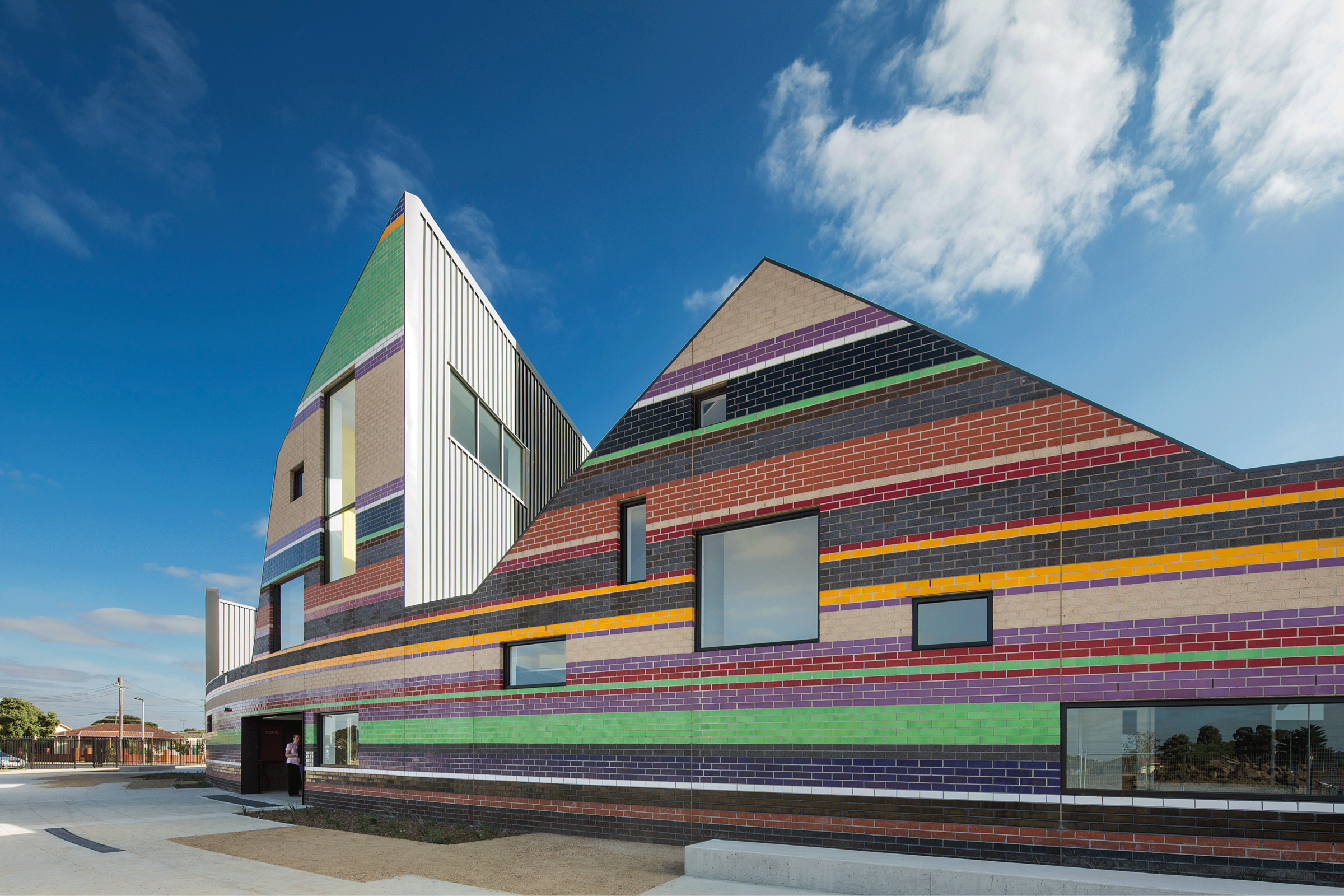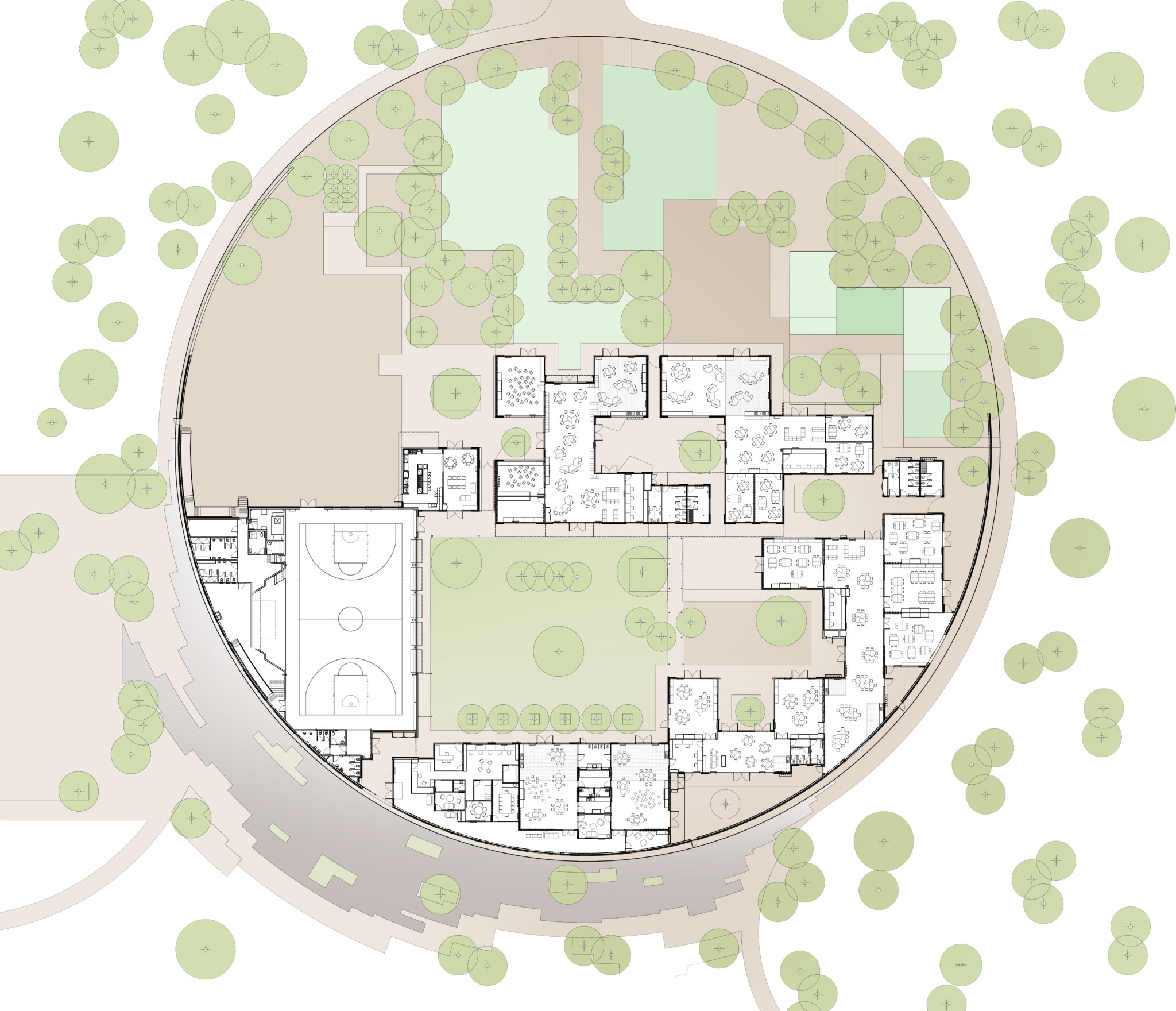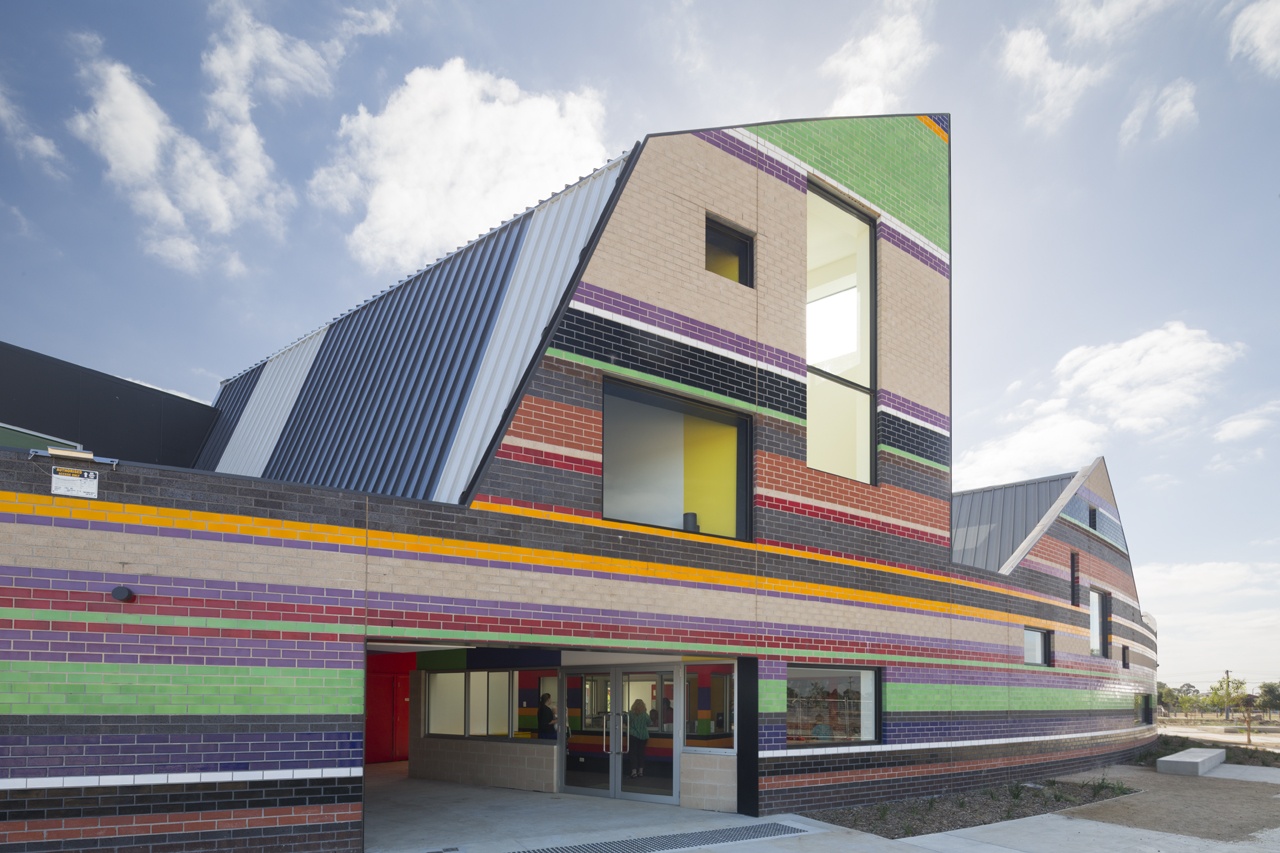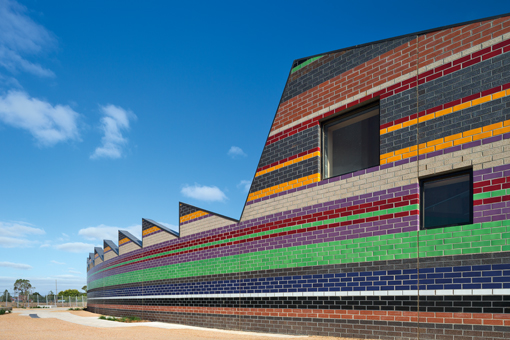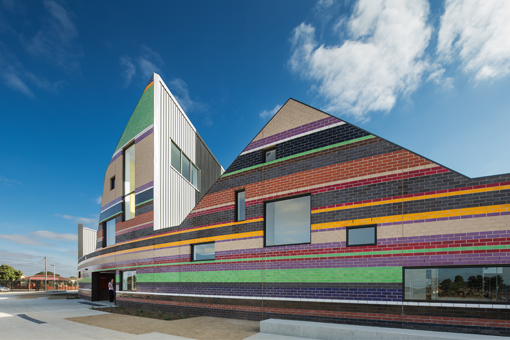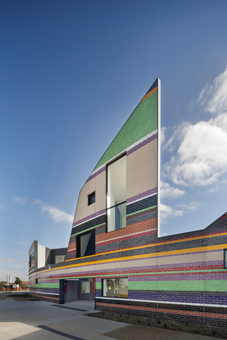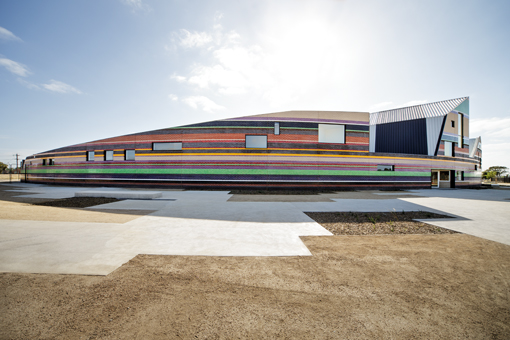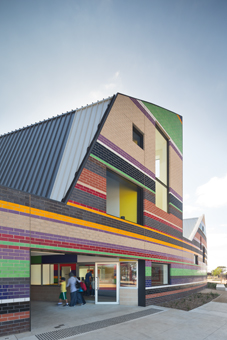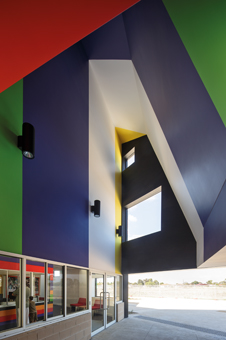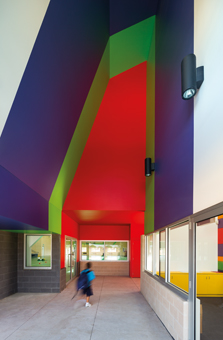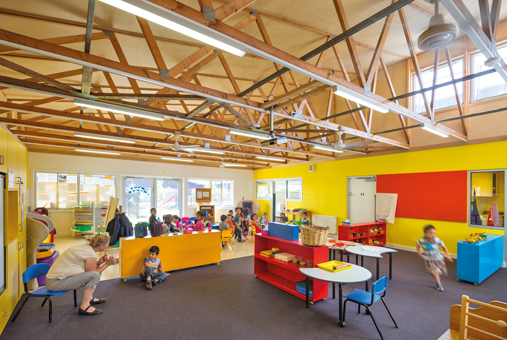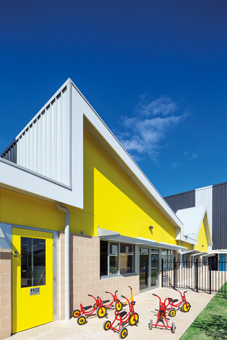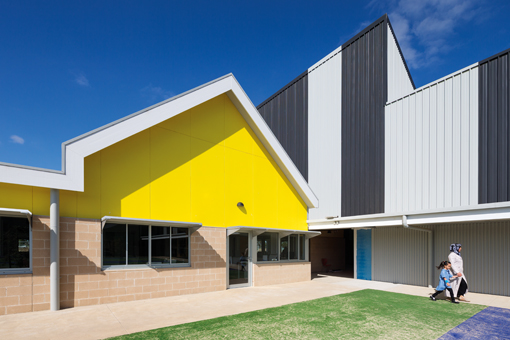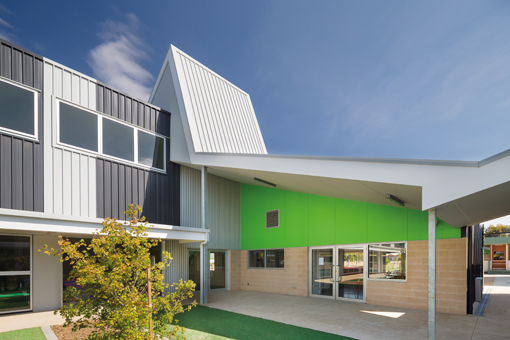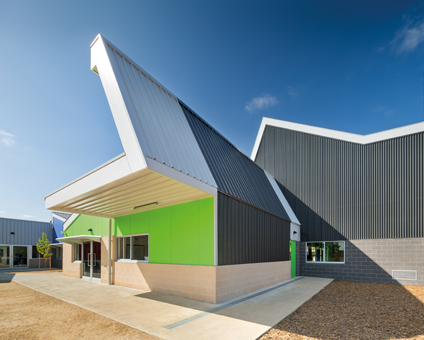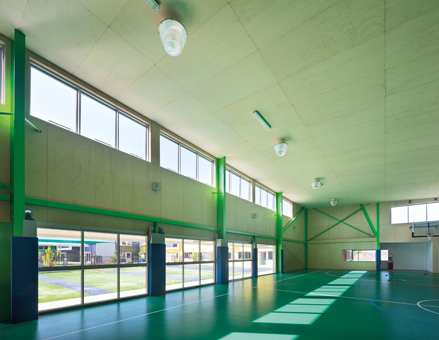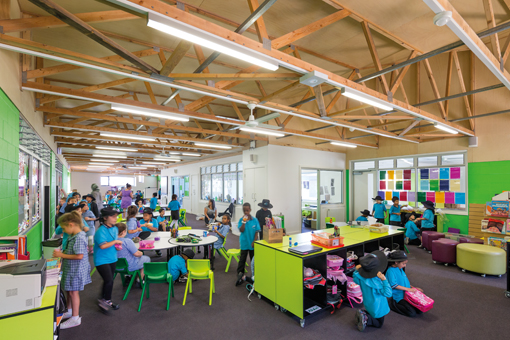The Dallas Brooks Community Primary School is a facility that incorporates an Early Learning Centre, a major Gym Hall and performance area, a broadcast room, and industrial style community kitchen and gathering space, a food technology teaching area and an adult learning centre.
The school acts as a walled city, linking small communal teaching spaces with open courtyards. The plan is arranged to produce several shared spaces, sheltered by the surrounding classrooms and community facilities. Furthermore, the teaching spaces are planned so that students move cyclically through the school, with their physical progression around the campus diagramming their educational progression from the Early Learning Centre, through to the final years of primary school. Each learning community represents a different pedagogical model, expressed through different planning principles, driven by an overarching aim to improve literacy, numeracy and creativity in the students. In this way the planning endeavours to construct an atmosphere that facilitates a fluid and rich journey through the early years of early academic life.
